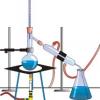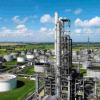First of all many thanks from the helpful ideas I've recieved and read here over the years. I have a situation under consideration and would appreciate any theoretical and practical advice/experience.
A client is considering removing the insulation on a deethanizer column due to issues with corrosion under insulation. The main concern is that the site ambient can get as low as minus 15degC, and the client is wondering as to how this would affect the duty requirements in the column, meeting of product specs and the column temperature profile.
I've attached 2 unisim models which I roughly developed for the column, one each for the insulated and non-insulated case. For the non-insulated case I used the heat loss functionality in unisim (under column environment) and used a typical U value of 50W/(m2K). The feed data is as specified in the column feed in the model, entering at 25 bara and 25 degC and containing N2, CO2 and C1 up to C10. The column spec is 2% C3 in C2 top product which is achieved by setting a tray temperature (theoretical stage 2) at 80degC.
My questions are as follows:
(i) Does this model work as I have built it? I can see from the model that my heat loss (hence increase in reboiler duty required) is minimal - less than 5%.Is this correct, or is there a better way to go about this?
(ii) My column temperature profile seems not to have changed almost at all.. I was expecting a slight change in the column temperature profile and this gives me some concern. Is there something I'm missing?
(iii) Are there other considerations before taking this kind of action? I'm wondering for example if the airside temperature of -15 degC will not cause any condensation on the inside of the column of components that could cause corrison which would normally not condense when the column wall temperature is hot due to the insulation?
(iv) Any other ideas or considerations from people's personal experiences both theoretical and practicalon uninsulated columns in cold ambient environment
Many thanks!
Ogeds

 FB
FB












